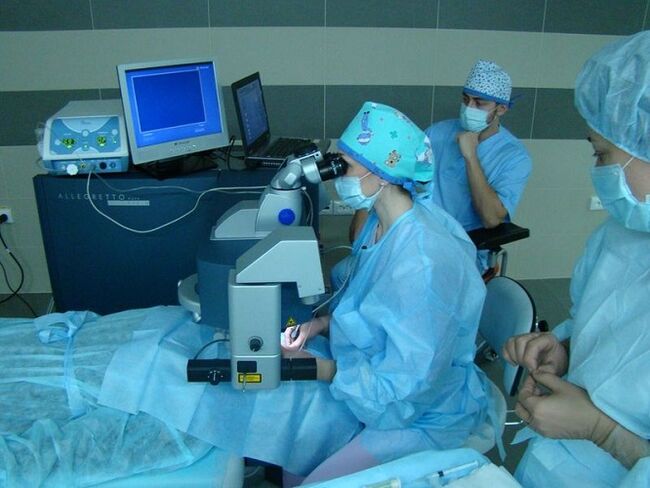
We all use vision to enjoy the beauty of the world, to see information and store it in memory. However, few of us think about how this unique mechanism works. Moreover, working at the computer, we do not give up our vision, and often go to the doctor when serious ophthalmological problems begin.
Today, diagnoses such as myopia, hyperopia and astigmatism are common even in children. All these diseases are characterized by impaired visual acuity. Depending on the condition and age of the patient, various methods are used in the treatment of this pathology - vitamin therapy, therapeutic exercises for the eyes, wearing glasses. When such methods of therapy fail, the doctor suggests that the patient undergo surgery to restore vision. What type of operation is this? Let's think together.
Types of surgery to restore vision
A few decades ago, humans did not have the ability to eliminate complex vision problems. Today, the technological process has made a great breakthrough in the field of ophthalmology, allowing you to restore visual acuity in just one day. It's about laser technology. Eye surgery is performed using highly sophisticated laser equipment. There are several different methods of laser vision correction. Let's look at them in detail:
Super Lasik - the most common operation today, which is performed according to the individual parameters of each patient, therefore it gives the best results.Lasik - the basic method of vision correction. It does not take into account the individual characteristics of the patient's corneal structure.Femto Lasik - a technique that uses a special femto-laser to restore vision.Femto Super Lasik - the method is similar to standard Femto Lasik, but is performed taking into account the individual characteristics of the patient's eyes.Presby Lasik - this technique takes into account age-related changes in near vision in patients over 40 years old, trying to correct it at all distances without glasses.PRK – methods used for contraindications to standard procedures. For example, if the cornea is too thin.Epi-Lasik - one type of standard Lasik procedure, which can sometimes be used for thin corneas.
Perform surgery
Ophthalmological surgeons remove the upper part of the cornea, after which the laser removes the inner part and returns the upper layer to its place. Surgery is performed under local anesthesia, not general anesthesia. Therefore, the harm to the body is minimal. The patient feels great. After surgery, vision begins to recover after 2-3 days. Further procedures to speed up the recovery period, patients carry out at home.
Contraindications for surgical intervention
Vision correction with laser surgery is not performed on people under 18 and over 60 years of age. Also, this surgical intervention is contraindicated in the presence of such diseases in patients as tuberculosis, diabetes, oncology. Laser correction is absolutely not recommended for pregnant and lactating women.
Post-operative period
As we said before, vision is restored after laser surgery very quickly. Patients only need to follow the rules of eye hygiene, temporarily excluding physical activity. Complications from laser procedures are minimized.
So, we found that the operation to restore vision allows you to achieve the best results in eliminating problems such as myopia, hyperopia, glaucoma, fibroids, astigmatism. Vision correction procedures are quick, recovery and adjustment are painless. Even with an advanced stage of visual organ disease, the operation is effective. In this case, the patient is not exposed to general anesthesia, does not experience discomfort before and after surgery.
However, better than any operation is the prevention of this disease. Therefore, it is necessary to protect vision and health in general from an early age.




















